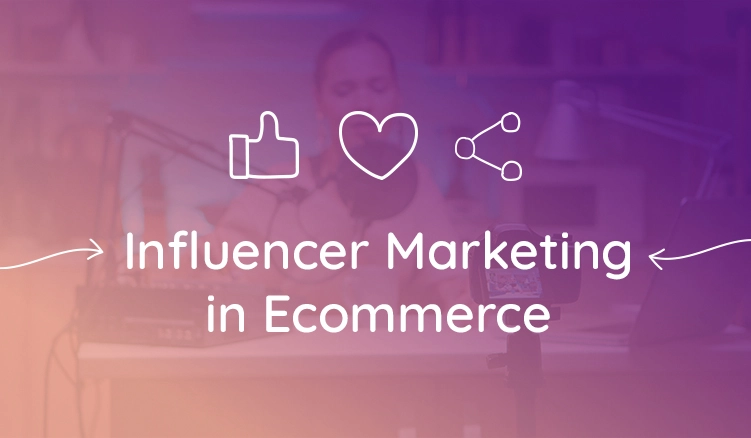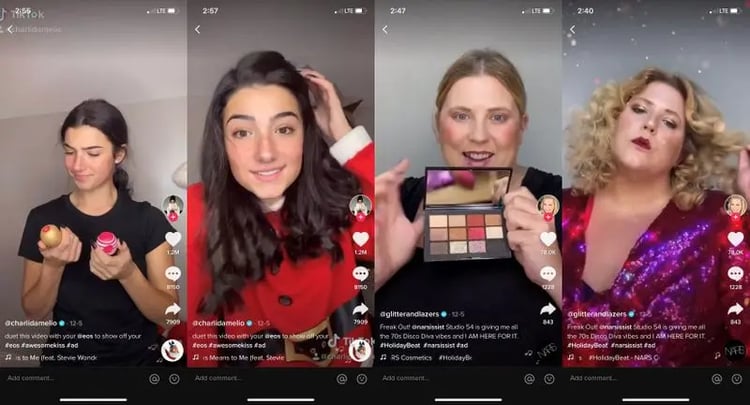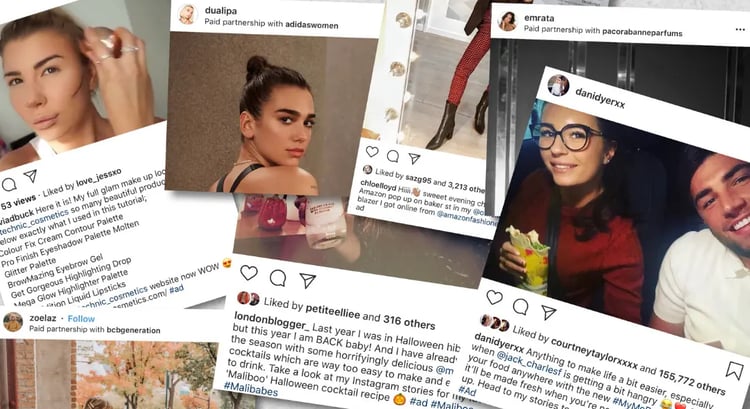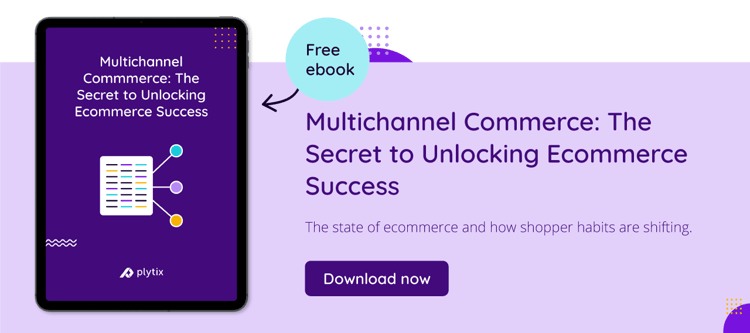Influencer Marketing Trends for Ecommerce in 2022

Keep the good stuff coming
Subscribe to our blog newsletter and get monthly content that helps you manage product data smarter.
No spam. Just real value.
Influencer marketing has become one of the fastest-growing customer-acquisition methods in ecommerce selling. The global influencer marketing industry is expected to reach $24.1 billion by 2025, exhibiting a CAGR of 32.0%. The dramatic growth of the sector has also resulted in new trends and developments.
Let’s look at the key influencer marketing trends for ecommerce in 2022.
Let’s Refresh: What Is Influencer Marketing?
Influencer marketing is a form of content marketing in which brands partner with “influencers” to endorse products on social media and other channels. An influencer is a person who has enough presence and following on social media or other channels to influence the purchase decisions of his or her followers. Traditionally, movie celebrities, musicians, and sports personalities have made up a large share of influencers. But lately, the rise of niche-specific macro and micro-influencers has reshaped influencer marketing for ecommerce companies.

Brief History on Influencer Marketing
Influencer marketing is older than you think. Advertising folklore mentions the Queen and the Pope as the earliest influencers. They endorsed medicine. Nancy Green, an African-American model, was one of the first known influencers in history. In 1890, she became the face of Aunt Jemima, a pancake mix by R.T. Davis Milling Company. However, it wasn’t until 2010 that the rise of influencer marketing on social media took place. Amazon was at the forefront of this trend.
The ecommerce giant came up with the idea of connecting its brand with Facebook and allowing people to suggest products to friends and family members. This drove other brands to leverage influencer marketing to put out a word about their products through other people. Since then, influencer marketing has remained one of the go-to marketing strategies for ecommerce companies.
Different Types of Influencers
There are five known types of influencers:
- Mega-Influencers: These influencers have celebrity status with more than one million followers. They can be anything from movie to sports stars.
- Macro-Influencers: These influencers have at least 500k to one million followers. They can be celebrities, athletes, or thought leaders in specific fields. Many macro-influencers have a niche audience.
- Mid-Tier Influencers: These influencers have 50k-500k followers and usually have a following in a specific niche such as finance, marketing or cooking.
- Micro-Influencers: These influencers have 10k-50k followers and have highly specific and targeted audiences. They're more like thought leaders.
- Nano-Influencers: These influencers have 1k-10k followers in a specific niche, and are often a cost-effective option for ecommerce brands.

Why Should Ecommerce Companies Invest in Influencer Marketing?
If you, as an ecommerce business, want to stay relevant in your market, you need to have a strong presence online, especially on social media. In fact, 87% of ecommerce shoppers rely on social media to make a purchase, and 49% of customers depend on influencer recommendations to buy items online.
Moreover, influencer marketing campaigns have proven to generate $6.5 on average per every $1 spent, exhibiting an ROI of 650%. Here are some other reasons why ecommerce companies should invest in influencer marketing are:
- Boost brand awareness
- Build meaningful relationships with your customers
- Boost SEO visibility and rankings
- Reach a broader audience
- Get more sales and increase revenue
Influencer Marketing Trends to Look Out For
Over the past 10 years, changing customer behaviors and the rise of new technologies have accelerated the influencer marketing space. Let’s look at some influencer marketing trends ecommerce companies should look out for in 2022.
Diversification of Channels
A major development in this space has been the increasing importance of authenticity and relevance. Influencer marketing campaigns need to be “natural,” and it should seem as if the influencer shares the values of your brand or product. It should look like the influencers have selected the products themselves.
For example, if you sell supplements, such as weight-gain protein, ensure that you collaborate with someone who’s known in the fitness space. Similarly, if you’re a fashion brand, look for a fashion vlogger who regularly shares new fashion ideas.
It might take a while to find the best influencer for your brand, and so you might want to look for influencer marketing opportunities offline. How do you do that? Well, let’s say you’re a CPG brand that sells sour candies. You can partner with a local grocery store and pay them to promote your product.
The store owner can put up your product’s advertisement in his shop, along with a customized QR code that links to the product page. This can be easily created using a QR Code Generator. Customers walking inside the store can scan the code, reach the product page, and buy their favorite candies online. You can generate a QR code for multiple stores in a city to reach a large offline audience.
Getting Over Vanity Numbers
Just because some influencers have millions of followers, it doesn’t mean they’ll help you make millions of sales. It’s time for ecommerce companies to get over vanity metrics such as likes, comments, and shares and look at more specific data.
These metrics are becoming more popular among ecommerce companies.
- Relevance: Find the perfect influencer in your niche. Companies need to look beyond the content that the influencer shares. In-depth research of their followers’ demographics is required to determine if they're a match.
- Resonance: Though likes, shares and comments are powerful "vanity" metrics, they can be a helpful indicator of how the influencer resonates with their audience. Compare the number of followers with the number of likes and comments. The lower the difference, the higher the engagement.
- Reach: It’s fine to work with influencers with smaller audiences, but more followers result in more reach. Therefore, look for influencers that have a high reach as well as resonance for your target audience and product/s.
- Revenue/ROI: Once you’ve partnered with an influencer, make revenue the sole criteria of measuring ROI. 2.5% is a good conversion rate for influencers. If you’re achieving anything below 2%, it’s time to rethink your strategy.
Good to know:
Achieving a high ROI doesn’t solely depend on conducting effective influencer research. Ecommerce companies need to know their products really well. Here’s where a product information management system like Plytix comes into play. It helps you centralize product data, making it easier to manage and store content. This way, you can get products on various selling channels faster than ever before!
Larger Companies: Micro-Influencers
A visible change is a shift from mega-influencers and celebrities to smaller influencers. While celebs have a large follower base, the relevance, resonance, and reach are limited. Hence, ecommerce companies end up spending millions of dollars in exchange for not-so-attractive returns. Moreover, 70% of teens trust influencers more than celebrities. Even though micro-influencers provide a smaller reach, their audience is highly niched and targeted. As a result, 82% of customers are more likely to buy a product recommended by a micro-influencer.
In 2022 and beyond, larger companies will look to partner with micro-influencers. Risk mitigation is one of the major reasons for this shift. Each post on social media has an equal probability of success and failure. So, considering that working with micro-influencers is less expensive, companies can reduce their risk by partnering with hundreds and thousands of influencers in a hyper-targeted niche market.
This trend will be more prevalent in the fashion, travel, and beauty sectors.
Social Commerce to Boost with Influencers
Even though social media plays a crucial role in influencing purchase decisions, it isn’t acting as a source of conversions. Research from Episerver shows that social media has an ecommerce conversion rate of around 1%, the second-lowest among all channels. Experts believe that influencer marketing will open up social media and make it a more popular buying channel among customers. In 2022, social media channels can be potential revenue sources for online companies.
More Focus on Rich Content
Gone are the days when brands would hire influencers to hold a product, click a selfie, and upload it on Instagram. It's deeper than that. Now, the focus will now be on creative campaigns and content ideas that engage their audiences.
Therefore, brands will start focusing on influencers who are also content creators and can present the product in a creative and engaging way. Similarly, brands will also look forward to working with agencies that provide exciting campaign ideas rather than a few influencers' names. An increased focus will be on video.
As video remains to be the most effective content type, ecommerce companies will look for influencers with video content creation capabilities. This also means that the use of video content platforms like YouTube and TikTok will witness a surge.
Conclusion
The influencer marketing industry is shifting from vanity metrics to specificity, authenticity, and reliability. Brands are taking a data-driven approach to influencer marketing, with an increased focus on engagement and revenue. In order to leverage influencer marketing to the fullest, ecommerce companies need to go beyond traditional channels and influencers and explore untapped opportunities.
In such a competitive market, ecommerce brands need to choose their channels wisely. A multichannel commerce approach - a combination of online and offline selling - will help you reach more customers and offer more sales avenues.
Unlock our secrets to ecommerce success in 2022 here:

Tanishq Agarwal
Tanishq Agarwal is a marketing analyst at MobStac. Extremely inquisitive about the contemporary developments in marketing tech, he aspires to bring the most pragmatic ones to the forefront. When he is not exploring the marketing realm, you'll probably find him indulged in bing-fests of The Office and Brooklyn Nine-Nine.

What if your product data actually worked for you?
We’ll show you how Plytix helps you stop fixing data—and start using it.
Related posts
Keep the good stuff coming
Subscribe to our blog newsletter and get monthly content that helps you manage product data smarter.
No spam. Just real value.





Think others should see this?
Go ahead and share it.